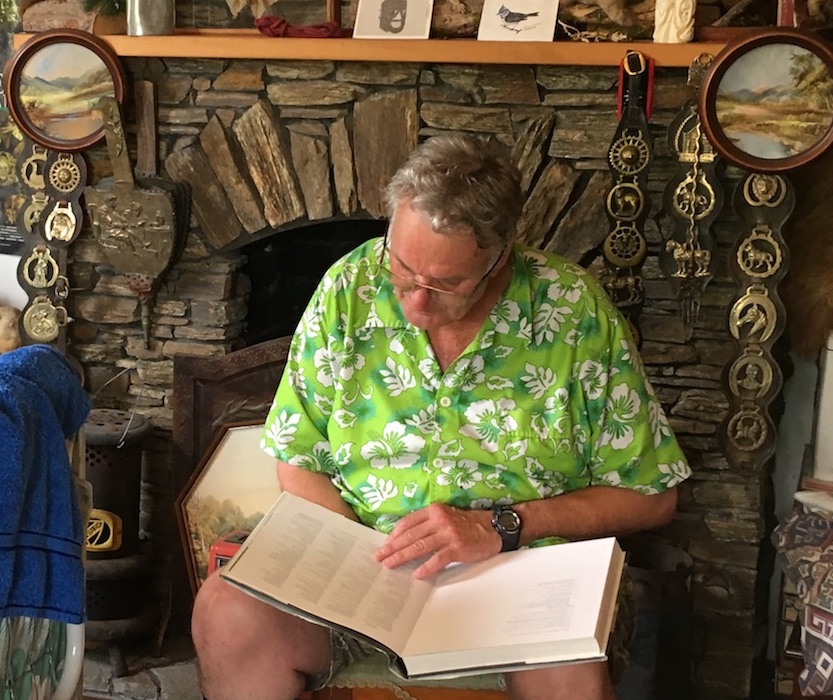
Self-made man, musician, entrepreneur, philanthropist, walking advocate, Morris Dancer and art collector (mostly Henry Thomas Garratt landscapes!).
No one is finally dead until the ripples they cause in the world die away – Terry Pratchett, Reaper Man.
Henry Thomas Garratt – 1875-1953 Artist, signwriter and musician
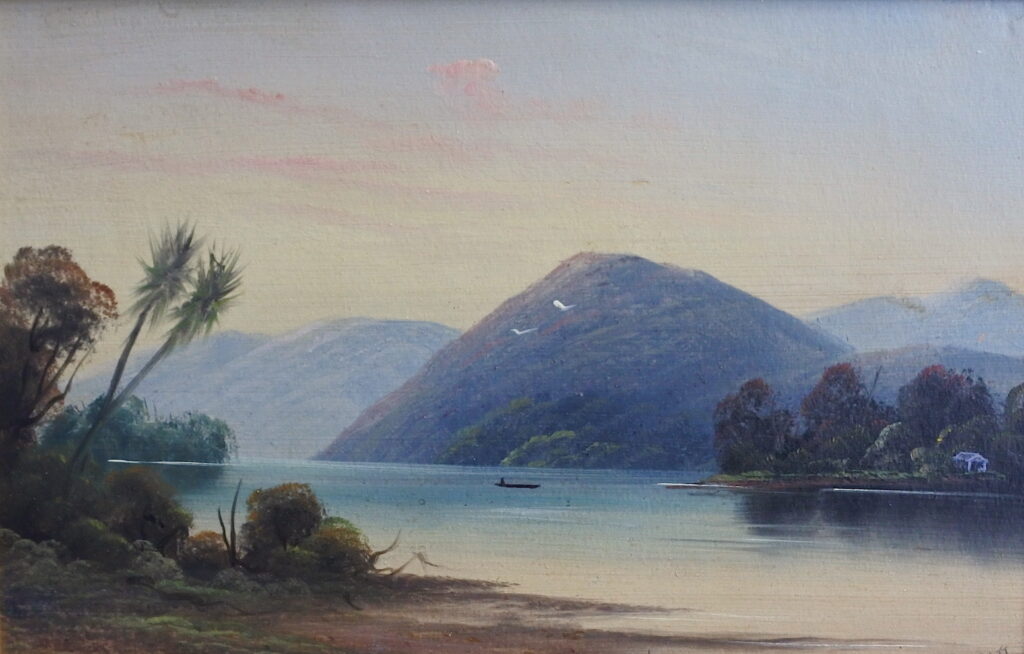


Henry Thomas Garratt was a hugely prolific and successful, although now largely forgotten, landscape painter in late Victorian Auckland. It has been speculated that Garratt painted at least 3000 landscapes during his professional career, some painted under his own name and others under more than half a dozen pseudonyms, including de Ritz and Paul Wren. His favourite subject matter was the New Zealand landscape, particularly those scenes favoured by tourists such as Lake Manapuri, Dusky Sound, the Wanganui River and Milford Sound.
Henry was also a sign writer, a musician and in his early life an entertainer appearing on the programme of various amateur productions and charity events.
Henry Thomas Garratt was born on 23rd May 1875 in Newton, Auckland. He was the second son of 13 children born to Henry Thomas Garratt (senior) and Elizabeth Garratt (nee Sissons). In the early 1880’s his father built a house at 24 East Street, Newton and from his early childhood this was Henry junior’s home until he got married in 1902. His parents had arrived in the ‘colony’ from England with their first daughter Lillie in 1866 and his father quickly became involved in the public life of Newton (then known as the Karangahape Ward). In 1882 Garratt senior was elected to a seat on the Auckland City Council, as the representative for Newton, a position he held till 1901. He was an active member of The Ancient Order of Foresters, a friendly society that promoted prudence, mutual help, and self-reliance among the working classes, and raised funds through entertainments and contests for the relief of the poor and to support sick members and their families. By 1877, Garratt was made the district secretary for the Order and in 1895 Elizabeth held the post of the first chief ranger of the ladies’ court. On Henry senior’s death in 1903, Elizabeth continued to live at the house on East Street until her death in 1923. The Garratt house then passed on to their daughter Lillie and was finally sold out of the family in 1944.
The senior Garratts made the most of their new life in the colony, establishing themselves in religious, social and cultural life of the city. In the obituary for Elizabeth, she is remembered for her personal charm, unfailing hospitality and keen interest in affairs generally. Of their 13 children only 6 survived into adulthood – two daughters (Lillie and Gertrude) and four sons; John Sissons became a pawn broker, Henry Thomas a sign writer and artist, Charles Frederick held the position of accountant in the Auckland Harbour Board and was a Choir Master at the Church of Christ in West Street, and Kershaw worked as a clicker in a boot factory by day, but became “Kershaw the Illusionist” by night. He described himself as a dramatic artist too, and performed with several theatre companies around New Zealand at the turn of the century, before moving to Melbourne in 1911.
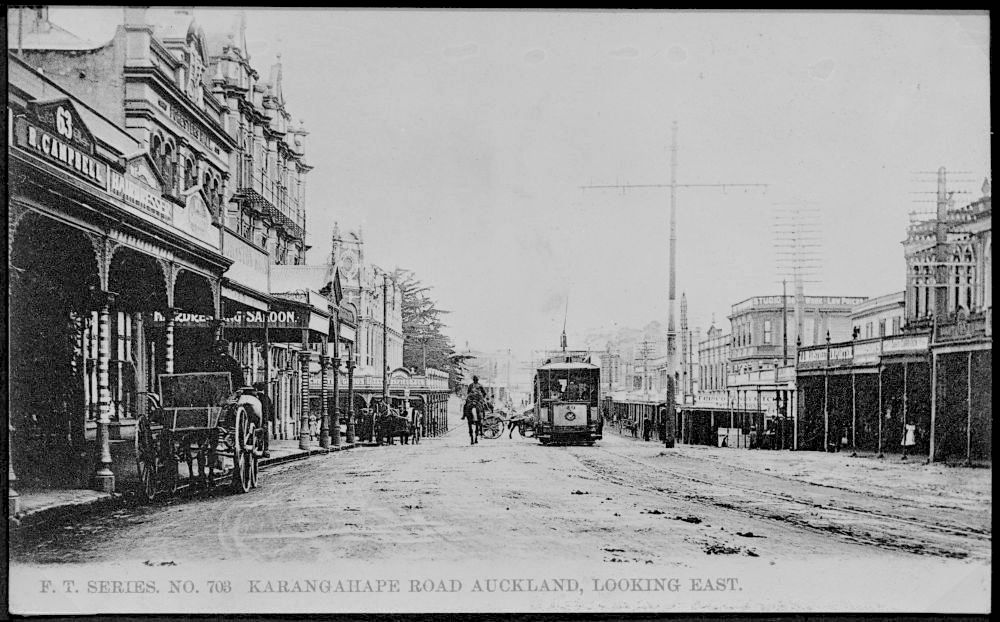
The senior Garratt’s involvement with the a friendly society like the Forester’s would have required the whole family to become involved in various social events from an early age. Like their parents, Henry and his brothers seemed to have been gregarious, outgoing and musical. From an early age they made appearances at church and Friendly Society concerts and fundraisers. For example in 1891, at aged 8, Charles making the first of many appearances at Auckland Band of Hope Union contests, sang “My Grandfather’s Drink”. Henry also makes an appearances at a Union Band of Hope contest in 1889 aged 14, playing a piccolo solo version of ‘Rousseau’s Dream’ by Schubert.

This too, was to be one of many stage appearances for Henry junior. He was a gifted musician, who could play a variety of instruments and like his brother Kershaw had a taste for the theatrical. Throughout his adult life Garratt was involved in amateur dramatics and entertainments, especially at benefits and fundraising events. From as early as 1901 he appears on the programme on numerous occasions, sometimes on the same programme as his brother Kershaw. Henry’s repertoire at these events included providing musical accompaniment for other performers, musical interludes between acts, playing bells and musical glasses. His speciality however and one that demonstrated his own particular skill was his ‘lightening sketches’ act, where he painted a landscape in four and a half minutes ‘giving a good illustration of the simplicity of landscape painting,” and adding variety at various performances by either painting the landscape upside down or through smoke screens.
For most of his working life Henry junior supported himself through his signwriting business. His list of services were not limited to signwriting however. His first business premises were on Karangahape Road, near the Forester’s Hall on the corner of Pitt Street and K’Road, not far from the family home on East Street. In 1901, at the age of 26, he promoted his business by placing adverts in the Auckland Star, describing himself as a sign writer, decorator and scenic artist and that pictorial work and illuminated addresses where his speciality. Although his business moved to various premises around the central city between 1901 and 1930, Henry’s his signwriting business continued well into the 1930s, expanding in scope to include managing and producing lantern slide advertising for picture theatres.
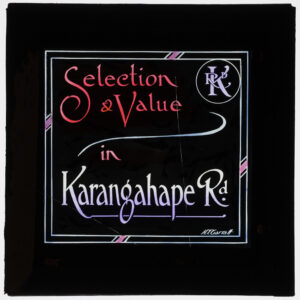
It is unclear when Garratt’s career as an artist started and there is no evidence to suggest he had formal art training. His first recorded paintings are small water colours of scenic views inserted into an album made for his father when Henry was about 19yrs old, which is inscribed “To my father on his 50th birthday May 1st ’94. H.T.G. Jnr.” Henry went on to master the art of topographical landscape painting. Working in oils he drew inspiration for his subject matter from various sources including calendars, newspapers, and possibly postcards. Around 1915 Henry formed a business relationship with Ralph Rifkin, the owner of The Globe Wholesale Picture Framing Works in Victoria Street. About this time Henry starts to paint under various pseudonyms including Carl De Ritz, Paul Wren and possibly F. Maxwell. These works are invariably oils on board in wide oak frames, presumably made by Rifkin. At the same time Henry continued to paint using his own name, both on board and canvas. There are no indications that he ever exhibited his work, as other artists of the period did, at the annual Auckland Society of the Arts exhibitions for example, but Paul Wren and De Ritz paintings feature at numerous auctions around the North Island between 1912 and 1930.

Henry married Pearl Mary Christmas in on August 6th, 1902 at St. Paul’s Church, Symonds Street. The couple had three daughters born between 1905 and 1909. Around 1914, Henry and his family moved to a house Henry had built at 28 Dexter Avenue, Mt Eden and at about the same time Henry invested in land on Waiheke Island, where he was to build the family holiday home in 1920. Henry was a Justice of the Peace and also held the role of Superintendent of the St John Ambulance during the 1930s until he retired to Waiheke around 1935. In his retirement Henry became the chair of the Ostend Road Board, acted as secretary of the Ostend Rate Payers Association, contributed to the Ostend Choir, continued to paint under his own name at his home studio, and entertain at social gatherings at the Ostend Hall. Pearl passed away in 1951 and Henry in 1953. They are both buried at Waiheke Lawn Cemetery at Onetangi.
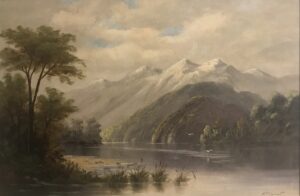

18 June 2021
How did Henry Thomas Garratt find a market for his paintings?
There is no doubt that Henry Thomas Garratt was a prolific artist, and the fact that his paintings can be found today, in almost every corner of country suggests that his work found a ready market in his day. But how exactly did he find this market in early 20th century Aotearoa/New Zealand? There is no evidence to suggest he was a member of the Auckland Society of Art, which was the only venue for artists to show and sell their work in the city at that time. Art dealers and their galleries (as we know them today) didn’t exist back then, and it seems the only other avenue for public exposure and soliciting for buyers was to have a studio in a prominent position, on Queen Street, for example – and we know Garratt never had such a studio. We can tell from the advertisements he placed in the newspapers that his workplaces, located in a number of inner city addresses over the years, were dedicated to signwriting. In fact, in 1905, he gave up the picture framing part of his own business altogether, to focus more on signwriting and the fashionable decorative arts of the day. And certainly, after that date, he never promoted or advertised his paintings for sale himself.

Therefore, one thing that puzzles collectors of Henry Thomas Garratt paintings (including his pseudonym works) is – how did his paintings get distributed and sold throughout New Zealand between approximately 1905, and say and the mid 1930s, when he was looking to retire to Waiheke Island. There is no evidence that he travelled outside of Auckland, quite the contrary in fact. He was a home body, dedicated to his signwriting business, other business ventures in the city, supporting his family and holidaying on Waiheke at the family bach.
There is one small clue, however, in some correspondence to be found in the collection of the National Library in Wellington. In a letter written by the curator of drawing and print dated December 1993, there is some anecdotal evidence passed on to her by Garratt’s daughter, probably in the 1980s. His daughter recalls that her father was “connected with a man called Rifkin who had a picture shop in Custom Street, Auckland. Rifkin had travellers selling New Zealand landscapes throughout New Zealand and ordered landscapes from Garratt ‘by the gross.’ Garratt signed the works he produced for Rifkin with several names.”
So, I thought it would be interesting to do some research and see if I could find anything to corroborate this story and perhaps find out more about this Mr. Rifkin at the same time.
This is what I discovered:
In the archives, there is only one Rifkin living in New Zealand in early years of the 20th century, only it is Riffkin, with two “ffs”. Ralph Riffkin, also known as Raphael Riffkin, Rafael Rafkind and Ralph Rivkin (Hebrew), was born in Riga, Latvia in 1875, but spent most of his early life in Glasgow, Scotland and married there in June 1901. In the 1910 Glasgow electoral register his occupation is given as picture frame maker. A family occupation that he learned from his father. Ralph, his wife Esther and their three children, Rhina, Abraham and Minnie, left from London in September 1911, heading for Australia, but turn up Auckland, New Zealand in 1912.
By 1913 Riffkin has become part owner of the Globe Wholesale Picture Framing Works operating out of 27 Victoria Street West and in the 1916 electoral records he is recorded as a picture dealer at the same address. With such a unique name in Auckland at that time, and a similarly appropriate occupation, I think this must be the same Riffkin that Garratt’s daughter talked about in her correspondence with the National Archives in the1980s.
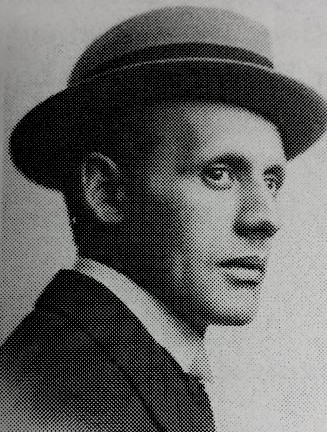

It is, of course, impossible to know when exactly Garratt and Riffkin’s crossed paths or how, but around 1913 there are a couple of significant co-incidences that suggest that the two men had come to know each other. For one, Ralph Rikffin was in partnership at the framing works in Victoria Street West with a chap called David Bookman, also a recent immigrant from Riga in Latvia. Sometime before 1914, Bookman, also a picture dealer, had bought a house in the new Dexterville Estate, just up the road from Potter’s Park on Dominion Road. He lived with his wife Kitty and daughter Pearl at 30 Dexter Road. Bookman’s neighbour at 28 Dexter Road, was none other than Henry Thomas Garratt and his wife Pearl. Both these families continued to live as neighbours on Dexter Road till at least 1932.
And then, also in 1913, the paintings by the artist “De Ritz” make their first appearance in the press, being sold by auction or at furniture shops in Gisborne, Marlborough and Temuka, near Timaru in the South Island. One newspaper review of the time declares “Mr De Ritz is an artist who paints nature very faithfully and with scrupulous regard for detail. The water scenes are very fine, and in all his works he attains a degree of perfection which marks him out as an artist of very superior gifts.”
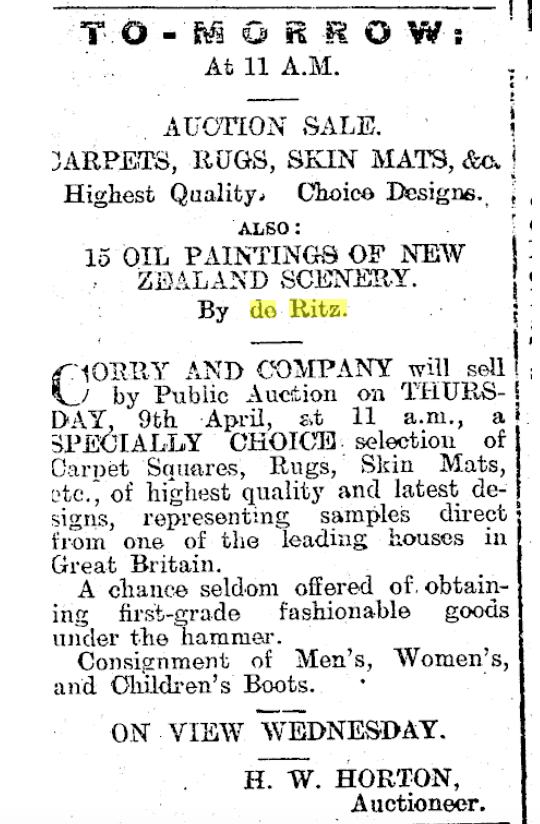
Whether Ralph Riffkin sent travellers around the country to sell bulk lots of Garratt’s “De Ritz” paintings to these business, we will never know, but it now seems likely that he acted as the agent for their distribution in some way.

In March 1915, Riffkin and Bookman dissolved their partnership and ownership of the framing business stayed in the hands of Riffkin. At some point after 1920 this business disappears from the record and Riffkin re-surfaces with a new business, the Oak Furnishing Company situated at 136 Symonds Street. He continues to run his business from this address until his death in 1944. At the Oak Furnishing Company Riffkin offered landscape and floral paintings in oak frames to match the oak furniture that could be purchased for bedroom or dining room on the ‘easiest of terms’, which would enable buyers to furnish their homes “at once with well designed, soundly made furniture, and to pay for it by small amounts you will scarcely miss.”


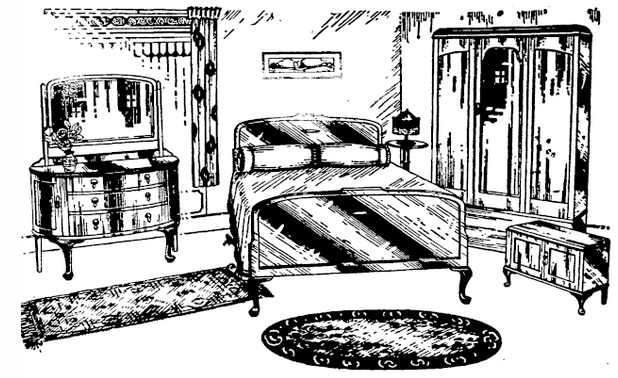
Ralph Riffkin was a prominent member of the Auckland Jewish Community, being a member of both the governance boards of the Auckland Hebrew Congregation and the Auckland Chevra Kadisha and Benevolent Society, as well as acting as an treasurer of the Auckland Zionist Society. Ralph Riffkin died in Auckland in 1944.